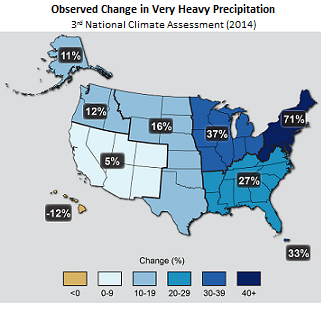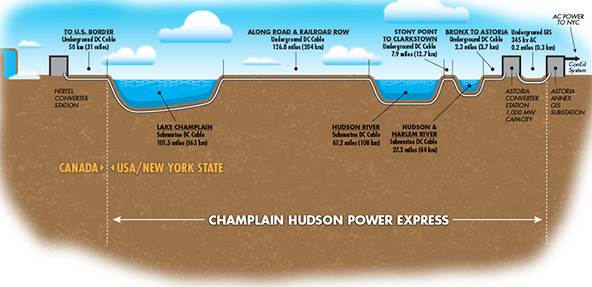T oday, the Sabin Center for Climate Change Law is releasing a set of model protocols for assessing the impacts of climate change on the built environment under the National Environmental Policy Act (NEPA) and state equivalents.
oday, the Sabin Center for Climate Change Law is releasing a set of model protocols for assessing the impacts of climate change on the built environment under the National Environmental Policy Act (NEPA) and state equivalents.
The protocols are intended for use in environmental reviews of proposed buildings and infrastructure (we plan to initiate a similar project for natural resource and land management projects in the near future). They outline a process for evaluating how climate change may affect a project and its surrounding environment, determining whether there are implications for the environmental consequences or performance of the project, and implementing appropriate adaptation and resilience measures.
The protocols are accompanied by a background paper, written by Associate Director Jessica Wentz, which describes: (i) the rationale for integrating climate impact considerations into environmental impact assessment (EIA) processes, (ii) the legal basis for requiring agencies to evaluate climate impacts during reviews conducted under NEPA and other EIA laws, (iii) a survey of existing guidelines for such evaluations, (iv) a survey of how climate change impacts are evaluated in recent federal EISs, and (v) a summary of outcomes from a stakeholder workshop convened to discuss the development of these protocols (read more about the workshop here).
Last year, the U.S. Council on Environmental Quality (CEQ) issued draft guidance on the consideration of climate change in environmental reviews conducted under NEPA. The draft guidance directs federal agencies to evaluate, among other things, whether the effects of climate change may alter the environmental consequences of a proposed action—for example, by increasing the vulnerability of an ecosystem or natural resource to the adverse impacts of the action. CEQ notes that such considerations fall “squarely within the realm of NEPA, informing decisions on whether to proceed with and how to design the proposed action to minimize impacts on the environment.”[1]
A variety of other jurisdictions, including Massachusetts, New York, and Washington, have issued similar policies for environmental reviews under state laws.
[1] CEQ, Revised Draft Guidance for Federal Departments and Agencies on Consideration of Greenhouse Gas Emissions and the Effects of Climate Change in NEPA Reviews, 79 Fed. Reg. 77,802, 77,828 (Dec. 24, 2014).



